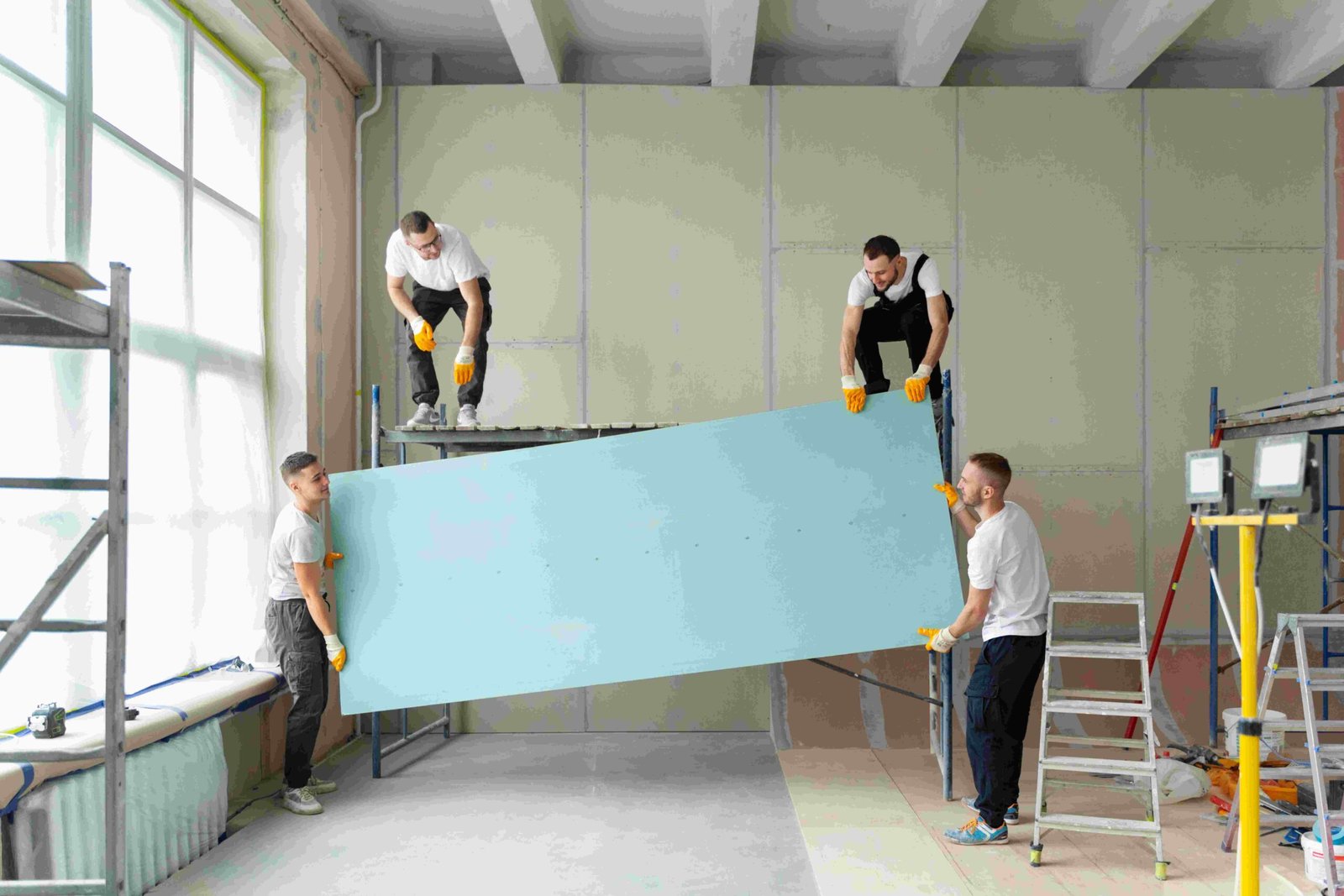Selecting the right sports flooring is only part of the equation for a safe and high-performing facility. Equally important is how the flooring is installed and the requirements of the subfloor beneath it. Even the best flooring material can fail prematurely if the installation is improper or the subfloor is inadequate.
The core concern for facility owners, managers, and contractors is:
“What are the requirements for the subfloor? Is the installation process complex, and does it require professional installers, or can it be a DIY project?”
This question goes beyond convenience—it directly affects athlete safety, flooring performance, and long-term durability . In this blog, we will explore subfloor requirements, installation methods for different types of sports flooring, the challenges of improper installation, and best practices to ensure a long-lasting, safe, and high-performing floor.
Understanding the Role of the Subfloor
The subfloor serves as the foundation for any sports flooring system. Its quality and preparation determine whether the surface above performs as intended. A poorly prepared subfloor can lead to:
- Uneven surfaces that cause ball bounce inconsistencies.
- Reduced shock absorption, increasing injury risks.
- Curling, buckling, or separation of flooring panels.
- Premature wear, dents, and surface damage.
A proper subfloor ensures:
- Stability – The surface remains flat and structurally sound under dynamic loads.
- Shock Absorption – Distributes impact forces to protect athletes’ joints.
- Moisture Control – Prevents warping, mold, and adhesive failure.
- Leveling – Provides uniformity for ball bounce, traction, and aesthetic appeal.
Types of Subfloor Systems
The subfloor must be compatible with the flooring material and the type of sport being played. Here are the most common types:
1. Concrete Subfloor
- Pros: Extremely durable, level, and ideal for both vinyl and hardwood sports flooring.
- Cons: Requires proper moisture barriers and leveling; rigid nature can reduce shock absorption without additional underlayment.
- Maintenance Note: Must be clean, dry, and free of cracks before installation.
2. Wood Subfloor
- Pros: Flexible, naturally shock-absorbing; works well for hardwood floors.
- Cons: Sensitive to moisture and requires consistent climate control.
- Installation Consideration: Must be properly supported with joists and plywood layers for stability.
3. Floating Subfloor Systems
- Pros: Provides extra shock absorption; ideal for volleyball, basketball, and multi-sport use.
- Cons: More complex installation; often requires professional expertise.
- Performance Benefit: Reduces joint stress and provides consistent surface stability.
4. Specialized Modular Subfloors
- Pros: Interlocking panels allow for rapid installation, easy repair, and relocation.
- Cons: Can be expensive; may not offer the same shock absorption as bonded systems.
- Use Case: Portable gym floors or temporary event setups.
Key Subfloor Requirements
For optimal performance, all subfloor systems must meet several key criteria:
1. Levelness
- Maximum allowable deviation is usually 2–3 mm over 2 meters .
- Uneven subfloors can lead to curling, tripping hazards, and inconsistent ball bounce.
2. Moisture Control
- Moisture content should not exceed recommended limits for the flooring type (typically ≤ 4% for wood and ≤ 2–3% for concrete).
- Vapor barriers or moisture-proof membranes are often necessary to prevent warping or adhesive failure.
3. Structural Integrity
- Subfloor must support the dynamic loads from athletes, equipment, and spectators.
- Weak joists, cracks, or sagging areas must be repaired before installation.
4. Cleanliness and Debris Removal
- Dust, dirt, grease, or loose particles compromise adhesion for vinyl or polyurethane floors.
- A thorough cleaning ensures the flooring bonds correctly and remains stable.
Installation Methods for Sports Flooring
Different sports flooring types require different installation methods, affecting complexity, cost, and professional involvement.
1. Hardwood Sports Flooring Installation
Process:
- Inspect and prepare the subfloor (usually plywood over concrete or wood joists).
- Install expansion gaps around the perimeter to allow for natural expansion and contraction.
- Nail or staple planks according to the manufacturer’s specification.
- Sand and apply finishes for traction and durability.
Complexity: High. Professional installation is strongly recommended due to:
- Precision requirements for flatness.
- Moisture management needs.
- Finishing processes like sanding and coating.
DIY Feasibility: Not ideal unless the installer has extensive experience.
2. Vinyl / PVC Sports Flooring Installation
Process:
- Prepare the subfloor by leveling, cleaning, and applying moisture barriers.
- Roll out vinyl sheets or tiles and cut to fit the space.
- Use adhesives or click-lock systems depending on the manufacturer.
- Seal seams if required to prevent lifting or moisture penetration.
- Allow proper curing time before first use.
Complexity: Medium. Professional installation is recommended, but certain tile or click-lock systems may allow careful DIY installation.
DIY Feasibility: Possible for smaller spaces; large gyms require professional expertise to avoid uneven seams and adhesive failures.
3. Polyurethane / Synthetic Sports Flooring Installation
Process:
- Prepare a smooth, dry subfloor (often concrete).
- Apply primer layers to ensure adhesion.
- Pour polyurethane or resin coatings in layers, allowing each to cure.
- Apply topcoat finishes for traction, durability, and color.
Complexity: Very high. Requires specialized equipment, knowledge of curing times, and precise application.
DIY Feasibility: Not recommended. Professional installation ensures safety, uniformity, and long-term performance.
4. Rubber Flooring Installation
Process:
- Clean and level subfloor.
- Roll out rubber sheets or lay interlocking tiles.
- Use adhesives or loose-lay methods as specified.
- Trim edges and ensure tight seams for safety and aesthetics.
Complexity: Low to medium. Some systems are straightforward, but large-scale installations benefit from professionals.
DIY Feasibility: Possible for small gyms, fitness rooms, or home setups with attention to detail.
Installation Challenges to Avoid
Even small mistakes during installation can compromise performance:
- Uneven Subfloor: Leads to surface instability, tripping hazards, and uneven ball bounce.
- Incorrect Moisture Management: Causes warping, adhesive failure, and surface curling.
- Improper Seaming: Especially in vinyl or rubber, leading to lifting edges and unsightly gaps.
- Insufficient Expansion Gaps: For hardwood floors, failure to account for expansion can cause buckling.
- Skipping Primer or Adhesive Guidelines: Reduces bonding strength and floor lifespan.
These challenges highlight why professional installation is often the safest and most cost-effective choice.
Professional vs. DIY Installation
Professional Installation Advantages:
- Ensures subfloor preparation meets specifications.
- Guarantees proper handling of moisture, adhesives, and expansion gaps.
- Provides a warranty backed by the manufacturer.
- Reduces long-term repair costs by ensuring correct installation from the start.
DIY Installation Considerations:
- Feasible for small spaces or modular flooring systems.
- Requires strict adherence to manufacturer instructions.
- Risk of errors increases, potentially compromising performance and voiding warranties.
- May save upfront costs but can lead to higher long-term expenses if mistakes occur.
Preparing the Subfloor: Best Practices
- Leveling and Flattening
- Use self-leveling compounds if minor unevenness exists.
- Ensure maximum deviation is within tolerance for the flooring type.
- Use self-leveling compounds if minor unevenness exists.
- Moisture Testing
- Measure concrete or wood moisture content.
- Apply vapor barriers as necessary.
- Measure concrete or wood moisture content.
- Cleaning and Debris Removal
- Remove dust, dirt, grease, and old adhesives.
- Use industrial vacuums and damp mopping for a clean surface.
- Remove dust, dirt, grease, and old adhesives.
- Climate Control During Installation
- Maintain temperature and humidity within manufacturer-specified ranges.
- Avoid installing flooring during extreme weather or uncontrolled conditions.
- Maintain temperature and humidity within manufacturer-specified ranges.
Real-World Examples
- Professional Basketball Arenas: Hardwood floors installed over engineered plywood with expansion gaps and strict moisture controls. Professionals ensure perfect flatness and shock absorption consistency.
- School Gyms: Vinyl floors installed with moisture barriers and adhesive bonding. Professional installers ensure seams are tight and surface is level.
- Community Fitness Centers: Rubber modular floors can be installed by in-house staff with training, making DIY feasible for smaller areas.
- Multi-Purpose Event Halls: Polyurethane flooring installed professionally to ensure seamless, durable surfaces that stand concerts, trade shows, and sports.
Conclusion
The installation method and subfloor requirements are critical determinants of sports flooring performance, longevity, and safety. Key takeaways include:
- The subfloor must be level, clean, moisture-controlled, and structurally sound .
- Different flooring types require specific installation methods —hardwood, vinyl, polyurethane, and rubber all have unique procedures.
- Professional installation ensures performance, warranty compliance, and long-term durability .
- DIY installation is possible for small, modular, or click-lock systems but comes with higher risk.
- Proper preparation, moisture management, and attention to detail prevent issues like curling, buckling, or adhesive failure.
Facility managers should prioritize subfloor quality and professional installation as part of their overall investment strategy. A well-installed sports floor provides:
- Safety for athletes by maintaining flat, stable surfaces.
- Consistent performance for ball bounce, traction, and shock absorption.
- Longevity that protects the facility’s investment.
- Aesthetic appeal that reflects professionalism
Ultimately, the floor is only as good as the foundation beneath it. By understanding subfloor requirements and adhering to proper installation methods, facility owners can ensure a sports flooring system that performs at its best from day one and continues to deliver for years to come .



